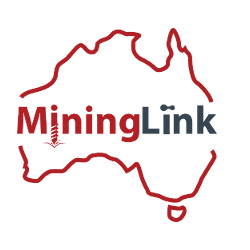Cockatoo island
http://www.plutonresources.com
iron-ore, Mining Camp, FiFo
Phone:
Address:
Level 1, 5 Ord St, West Perth, WA, 6005
State: Level 1, 5 Ord St, West Perth, WA, 6005
Email:
The Cockatoo Island hematite mine is located 200 kilometres north of Broome off the Kimberley coast, in Western Australia's Yampi Sound. It is a 50/50 joint venture between Pluton Resources Limited and Hong Kong listed company, Wise Energy Group. Pluton Resources is the manager of the joint venture operation at the site and Wise Energy Group responsible for marketing and shipping of the product. Wise Energy Group is a major shareholder in Pluton Resources. The mining contract at Cockatoo Island is held by Watpac.
Pluton Resources Limited Acquired Cockatoo Island Mine in 2012
Pluton Resources acquired the Cockatoo Island iron ore mine from its former owners Cliffs Asia Pacific and HWE Cockatoo in September 2012. Pluton Resources began mining activity on Cockatoo Island on October 1, 2012 at Stage Four, with the first joint venture ore shipped from the island to Asian customers in December 2012.
Cockatoo Island Mine Produces High Grade Iron ore Fines
The Cockatoo Island Mine is a direct shipping operation that produces high grade iron ore fines. Its high quality hermatite ore averages around 68 percent iron. The mined ore is first crushed and blended with ore of a lower grade before being stockpiled on-site. It is then loaded onto ships for exporting to overseas customers. The ship loading facilities are adjacent to the mining operation, a fact that eliminates the cost and need for transportation.
Cockatoo Island Mining Contract Awarded to Watpac
The contract to mine iron ore at Cockatoo Island is being carried out by Watpac Civil and Mining. Watpac has the responsibility to provide the operational mining requirements to the joint venture partners including all drilling and blasting, loading, haulage and processing for direct shipping. Watpac have constructed a new crushing plant on the island. The mine is the only known sub-sea mining operation being undertaken anywhere in the world.
Sea Wall at Cockatoo Island Holds Back Tidal Flows
Iron ore mining began on Cockatoo Island in 2002. The ore body being mined at the site is basically pure hematite that dips down at 60 degrees. It is 35 metres wide with a strike length of more than one kilometre. A feasibility study undertaken in 2001 determined the ore body extended below the surrounding sea bed. A sea wall was therefore constructed to prevent any tidal water from entering the open pit that was to be mined. The Cockatoo Island Mine produces around 1.8 million tonnes of processed iron ore each year. It had approximately two million tonnes of probable iron ore reserves as at December 2010. The hematite ore produced at the mine has become highly sought after by the Chinese market because of the high quality premium fine ore it constantly produces.
Cockatoo Island is From Where the First Export of Iron Ore was Made From Australia
Cockatoo Island mine owner, Pluton Resources Limited, was established in 2006 to explore mining tenements in Tasmania and Western Australia. Cockatoo Island is one of three islands that comprise the Kimberly Iron Ore Hub (KIOH) in Yampi Sound. Iron ore mining has been taking place in Yampi Sound for over 60 years with mining giant BHP Billiton having commenced production there in 1951. It was also the place from where the first iron ore was exported from Australia to overseas countries. It has historically produced ore containing over 40 percent iron as Direct
Shipping Ore (DSO) that contains low levels of sulphur and phosphorus.
The development of an underground operation at Cockatoo Island is currently being assessed. If it is found to be viable there is from 60 to 120 million tonnes of hematite remaining available under the sea with a grade of between 65 and 69 percent iron.

